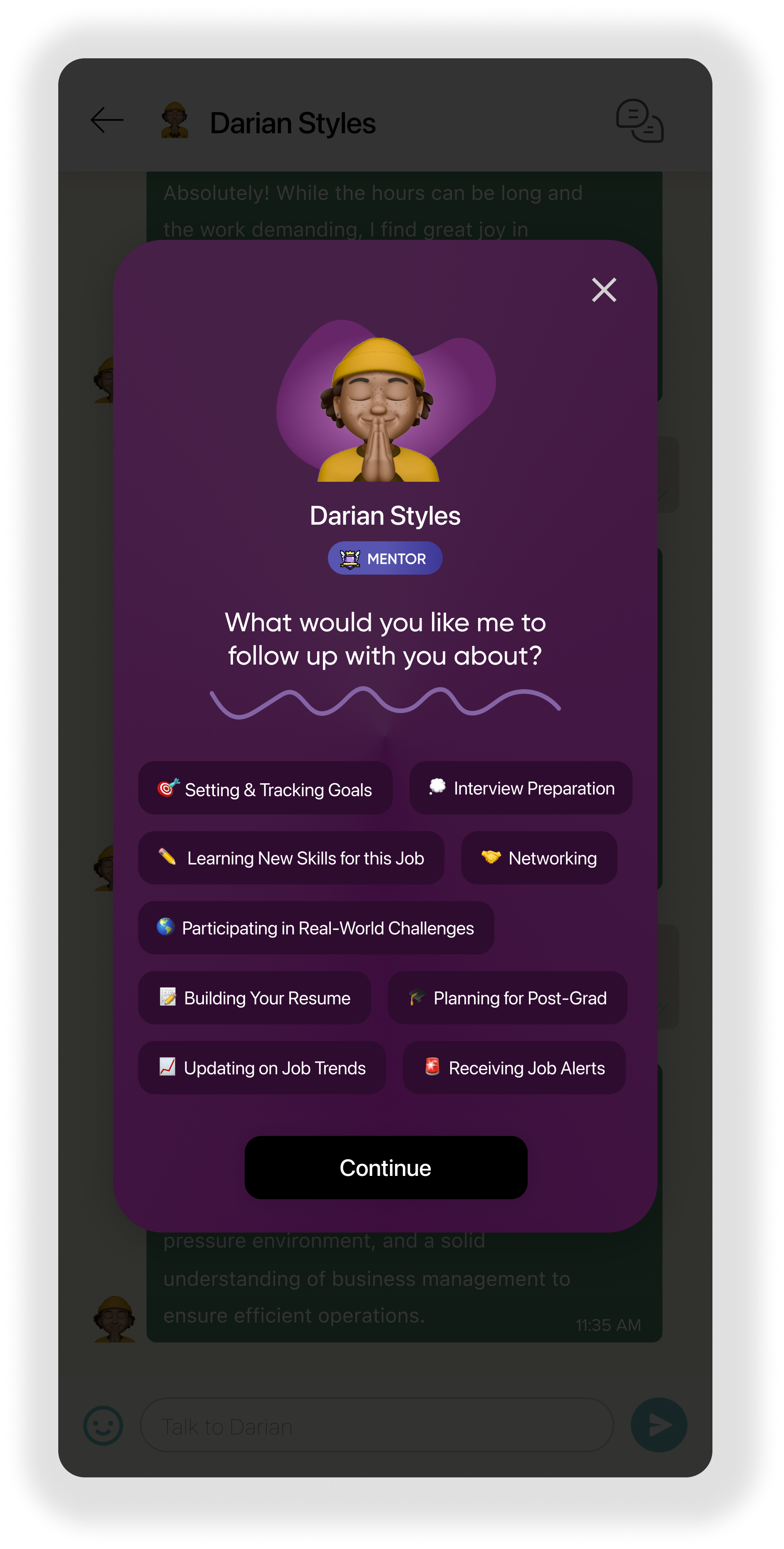Hope Street Group
I joined Hope Street during a period of extensive ideation without a tangible design foundation, focusing on developing an app aimed at the education sector. I played a pivotal role in conceptualization and creation, designing numerous mockups to explore various directions and establish a clear vision for the app. Along with my mentor we designed the app's entire interface, updating and adding to it regularly based on feedback we received from a partner High School in Northern California that tested the app before it released on the App Store.
Year
2023-2024
Role
Product Design
I worked under time, budget, and resource constraints to take a concept for an app and bring it to life.
I did desk research, created concept sketches, developed wireframes, and designed high fidelity mockups.
I worked closely with engineers to develop working prototypes of my designs which were tested amongst the target audience (students) before the official app store launch.
TL;DR
Ideation
The concept for the app was simple: A platform that uses AI to guide students through their career exploration journey. The initial challenge was figuring out how we could achieve this, so we began brainstorming and sketching down ideas.
Problems & Solutions
1. AI Creation
Problem: Early versions of the app displayed several random AI Professionals with different occupations that students could choose to talk to with an option to; this lacked the element of personalization, what if students didn’t want to talk to any of the displayed AI Professionals?
Solution: Let the student create their own personal bot/mentor. They can immediately jump into a conversation instead of wasting time scrolling and finding the ideal AI Professional. This also made the overall app more focused and made life easier for our engineers.
2. Onboarding Process
Problem: Initially, students would have to fill out a series of demographic questions before being able to access the app. We wanted students to be able to start using the app immediately while learning about them at the same time to make their experience more tailored for them.
Solution: Discover Page - we reincorporated the initial idea of students being able to browse through different AI Professionals and asked a question after every third AI Professional they scrolled through, automatically updating the discover page after every answer making it more relevant for their needs. Implementing onboarding into one of the core features of the app while gathering crucial data about them proved to be extremely efficient and beneficial, reducing initial onboarding time by 75%; this feature also accounted for students who didn’t have any idea on what type of person they wanted to talk to, being able to browse gave them more clarity.
3. Engagement
Problem: Early stage testing with our partner high school revealed that about 20% of students re-opened the app in their own time when not in school, while this was a great metric, we needed to engage students further.
Solution: Social Features - incorporating social elements into our app was key to achieve our goal; allowing students to interact with each other in some form diversified our app, made it multidimensional, and increased app usage and re-engagement rates significantly. We implemented leaderboards so students could track each other’s progress, a leveling system for students to track their own progress which was linked to rewards such as an AMA with a real-world professional in a field of interest to them, ‘stories’ that they could share with their friends of a conversation they had with an AI Professional, and group conversations they could partake in with other students and an AI Professional.
Misc. Screens
Learnings
In this project, we aimed to transform a concept into a functional app that leverages AI to assist students in navigating their career exploration paths. A critical aspect of our approach was establishing and nurturing relationships with our partner high school. Through regular visits and actively soliciting feedback, we were able to demonstrate our commitment to listening and responding to the needs of our users. This consistent interaction not only allowed us to refine the app in alignment with real user needs but also helped us build trust and rapport with the school and students. I learned that genuine relationships with users are invaluable, not just for gathering insightful feedback but also for creating a product that truly resonates with its audience. The positive responses from students and educators alike reinforced the significance of our engagement strategy, showcasing that the success of a product can be greatly enhanced by fostering strong, ongoing relationships with its users.


























